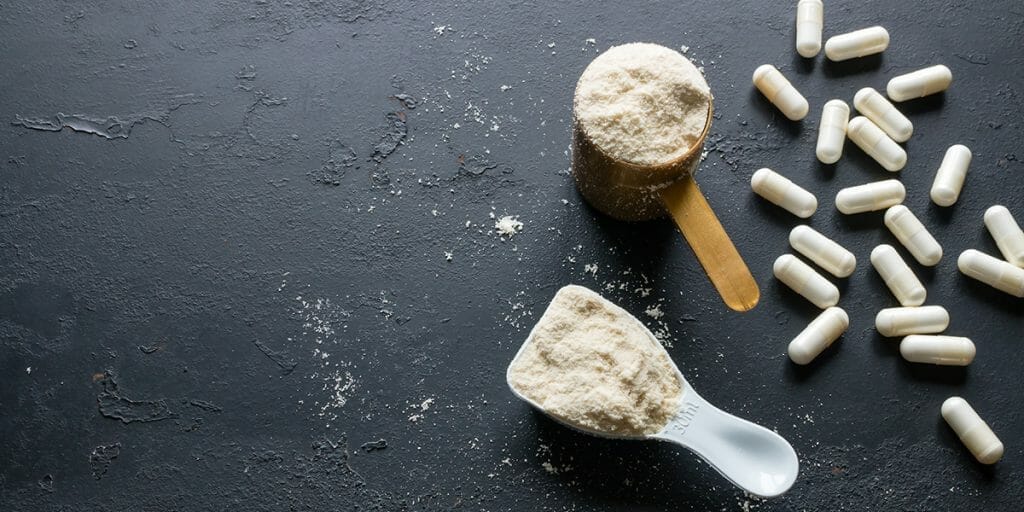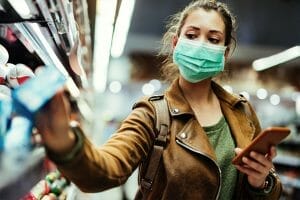
First let me apologise on behalf of all practitioners and clients for the product outages we are experiencing at Nutri-Link. We know how frustrating it is to find your favoured supplement is not available and more so during times of increased need. Without exhausting your patience on explanations, supply line problems, manufacturing slow downs and raw material supplies have all been part of the Coronavirus challenge. Add to that a significant increase in demand and regrettably we have been unable to meet everyone’s needs.
The changes required to resolve this are coming through, quickly and efficiently and we are expecting that back orders and manufacturing will be catching up very soon. Thank you for your continued loyalty and support, we really appreciate it.
What is quite remarkable is just how little viral material (by weight) has been needed to change the face of the world’s economies and wreak countless personal disasters, as well as trigger a great deal of introspection. It has been calculated that the viral load (viral load is a measure of the number of viral particles present in an individual ) required to make a human ill with Sars-Cov-2 is somewhere between 50-70 billion coronaviruses (this remains a moving target as more data is recovered), which sounds a lot until you calculate this by their weight! A single coronavirus is estimated to weigh less than two attograms (which is 10 to the power minus 18 grams) or 1069577.59 Da.
This translates into a microscopically small volume per sick person of approximately 0.0000006 viral grams, which at the time of publication (5th June 2020) with just over 6.6m cases globally just less than 4 viral grams, or a typical teaspoon of salt by comparison is all it has taken globally, to cause or be implicated in excess of 400,000 deaths, despite a massive attempt to reduce the risk of spreading via quarantine, masks and hygiene.
What have we to consider going forward?
 Your nose it seems is the primary entry point for the virus, researchers found a gradient of infectivity that decreases from the upper to the lower respiratory tract: the most easily infected cells are in the nasal cavity, and the least easily infected deep in the lungs. That gradient mapped neatly onto the distribution of cells that express ACE2, a protein that SARS-CoV-2 uses to enter cells.
Your nose it seems is the primary entry point for the virus, researchers found a gradient of infectivity that decreases from the upper to the lower respiratory tract: the most easily infected cells are in the nasal cavity, and the least easily infected deep in the lungs. That gradient mapped neatly onto the distribution of cells that express ACE2, a protein that SARS-CoV-2 uses to enter cells.
It seems the virus gets a foothold in the nose, then sneaks down the respiratory tract when breathed into the airways. Supporting the use of masks and preventative measures such as nasal cleansing using netipots or other similar devices.
Do we become immune post infection? One study found that more than 99% of participants who had been infected eventually developed antibodies — suggesting that they are immune from reinfection for an unknown length of time, although some took over 4 weeks to generate antibodies after recovery. This raises the question about immunity passports. But does restricting movement based on biology threaten freedom, fairness and public health?
Inevitably there are numerous voices suggesting nefarious political and business interests driving the generation of and risks associated with the virus, as well as the possible development of an effective vaccine and the financial rewards linked to that. One such critic is Dr Judy Mikovits, a controversial virologist. If you wish to read a fact checking review, before watching her appearances, this one is worth your investment in time.
Amongst many other potential conflicts there is the simple notion of societal stratification. Labelling people based on their COVID-19 status would create a new measure by which to divide the ‘haves’ and the ‘have-nots’ — the immunoprivileged and the immunodeprived. Those that can respond to infection and those that appear not to.
As we have previously discussed, there remains the pervading notion that immunocompetence is simply something that ‘exists’, rather than recognising that individuals possess the opportunity to enhance or diminish theirs and their families immunocompetence, via appropriate lifestyle and nutritional interventions.
Clearly there is the desire to challenge immune generation via increased exposure, if it’s possible that environmental pressures have altered the viability of the virus, or that quarantine has worked well? The economic pressures are now starting to bear down and we are likely to be managing the consequences for years to come. Focussing on enhancing public health awareness in personal opportunity and responsibility can be driven by your one to one or group care experiences. This is the time to embed lifestyle enhancements into all you meet and know.
